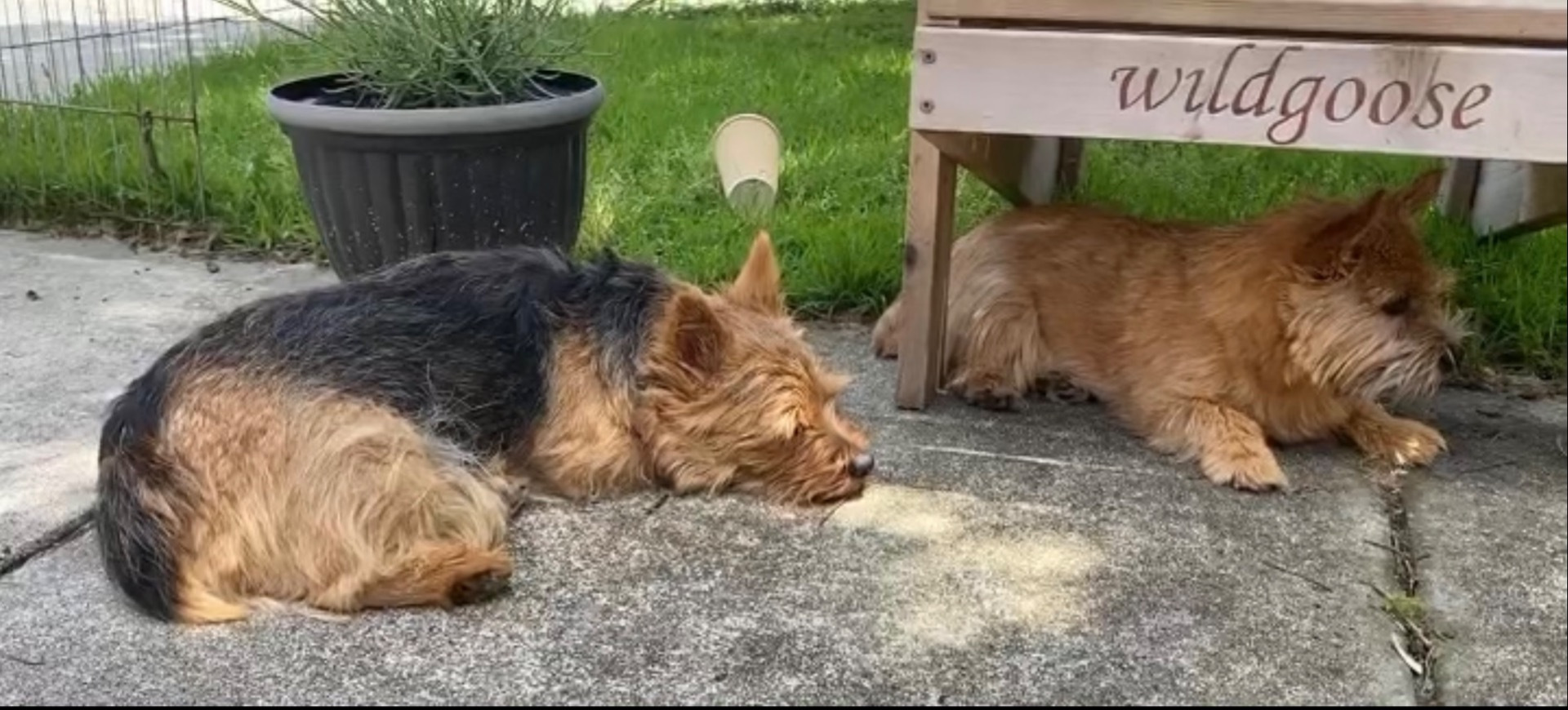About the Breed
History
In the 1880's, a working terrier of East Anglia, England, the Norwich Terrier, pronounced “Norich", (and later the drop eared variety now know as the Norfolk Terrier, pronounced Norfuk), were believed to have been developed by crossing small Irish Terriers with other short legged terrier breeds. Once known as the Cantab Terrier, the game and hardy little dogs were useful as ratters in the stable yard, bolters of fox for the hunt, and loving family companions.
In 1932 the breed became known as the Norwich Terrier by The Kennel Club (England) and the first written standard was created. In 1964 The Kennel Club reclassified the drop ear variety as it its own breed, the Norfolk Terrier, and the prick eared variety retained the name Norwich Terrier. The American Kennel Club and Canadian Kennel Club both recognized the division in 1979. After many generations these have developed as two distinct breeds in both physical looks as well as in temperament.
Rufus the Red Knight - Biffin of Beaufin (Drop Ear) - Neachley Orange
c.1932
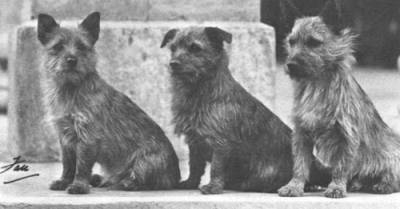
Smudge - c.1932
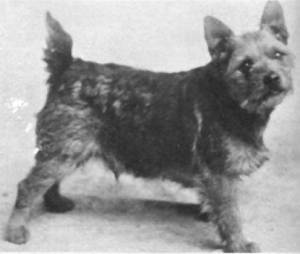
Nothing replaces the opportunity to meet a Norwich Terrier in person.
This will tell you much about the character and disposition of the breed.
Norwich Terriers Today
Temperament
These small but hardy teddy bears are courageous, remarkably intelligent and wonderfully affectionate. They can be assertive but they are never aggressive or quarrelsome. They are energetic and thrive on an active life but won't be any worse for wear if they miss a day's exercise now and then. Norwich are big dogs in a little dog's body ... and nobody has told them! They are easy to train and eager do your bidding. Norwich look for human leadership to provide the house rules ... or they may rule the roost. They are sensitive but 100% Terrier. They should never be kept outside or in a kennel setting because they love the companionship of their owners too much. Norwich are not yappy but they will warn of a stranger approaching. When brought in to the home as a puppy they quickly accept other pets and love children. Most important is Norwich do not have a road sense and hence need to be kept on lead when there are being walked. Norwich are formidable as ratters. Norwich seem to prefer the company of humans over other dogs, though they readily accept their heritage of being pack dogs. These are generalizations.
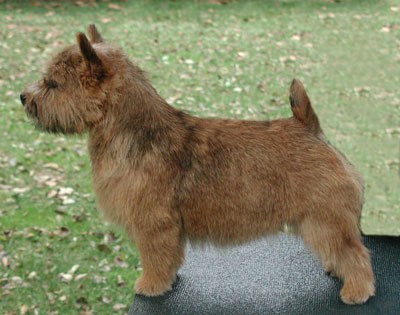
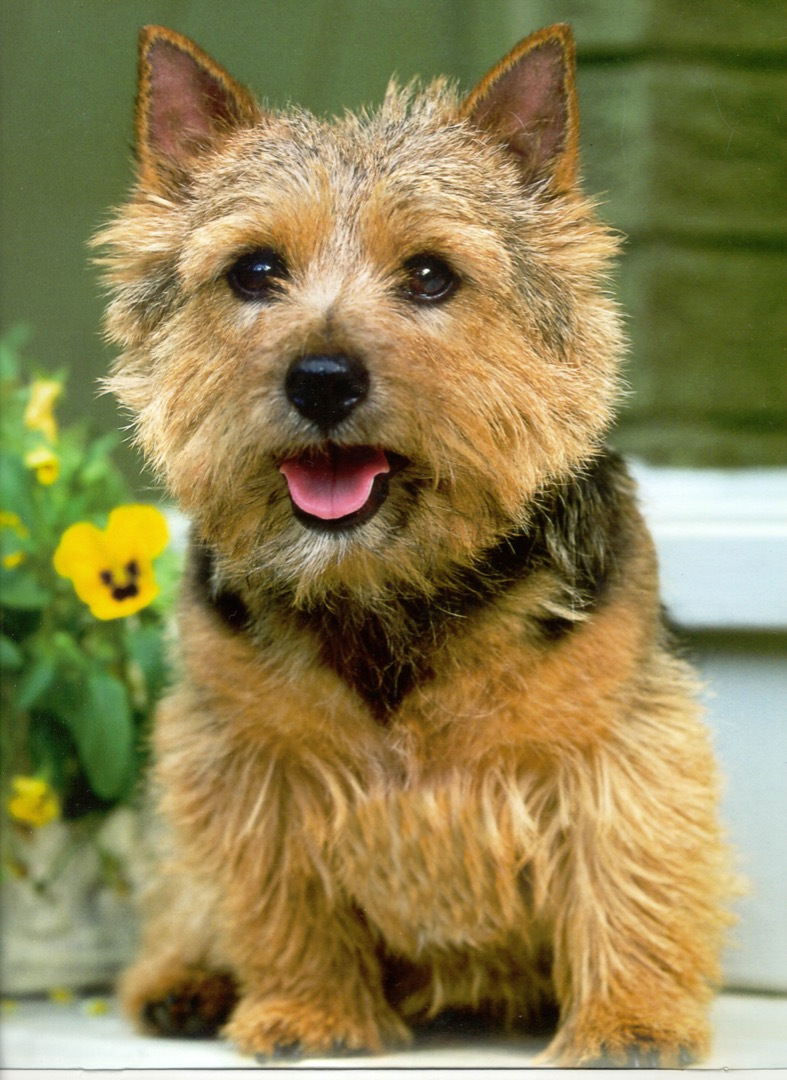
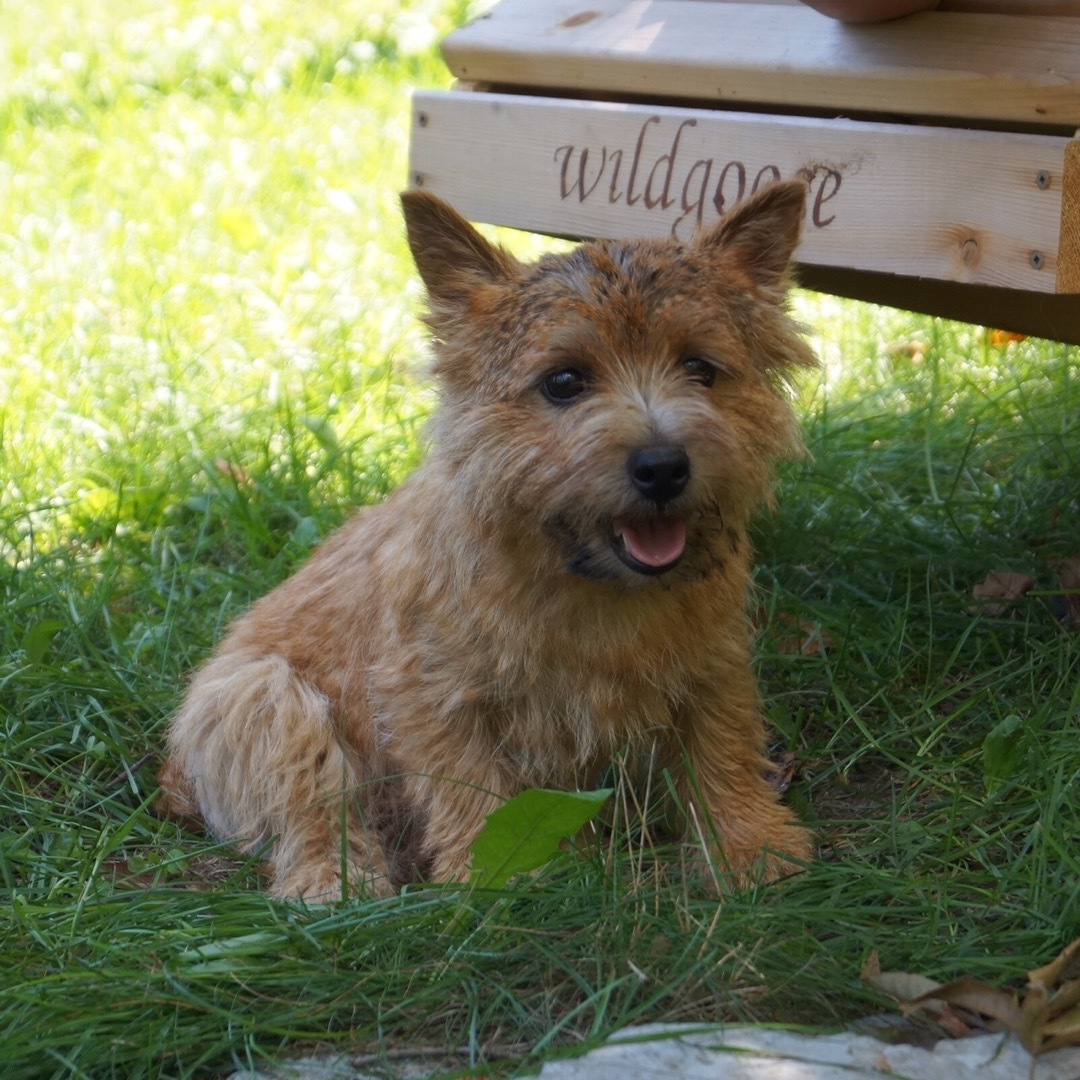
Health
Like all living things, there are some incidences of health issues in Norwich Terriers that are considered worthy to do preventative testing. Responsible breeders offer health guarantees. Responsible breeders do genetic testing to make responsible decision in their breeding programs. Breeders that don't test don't know what health issues they are dealing with and likely don't care. For Norwich Terriers there are no studies that indicate a breed predisposition (i.e. occurs more commonly in one breed than another) for a particular disease. Nor are there any disorders associated with conformation (i.e. no serious physical problems or discomforts for the breed). Disorders which have been reported sporadically include, in no priority: elongated soft pallates, luxating patellas, cataracts, hip dysplasia, and epilepsy. For more detailed definitions of these health incidents click here.
Grooming
Norwich Terriers have two coats - a harsh, wiry topcoat and a soft warm undercoat. All that is really necessary is a good combing and brushing once a week to remove the loose, dead hairs and prevent matting. At a minimum, the top coat should be hand stripped once in the fall and once in the spring. Clipping or cutting these coats ruins thebeautiful colours and texture. You can wash this coat with a doggie shampoo any time it is desirable.
Height & Weight
As an adult, the ideal height is 10 to 12 inches ( 25-30 cm) at the withers and weight is about 12 pounds (5 Kg). They are the smallest of the terriers.
Exercise Requirements
A good daily walk takes care of the exercise requirements of the Norwich Terrier. They are excellent walking companions. They are reasonable joggers for those who like to jog with their dogs.
Black and Tan (left bottom) Red (right bottom)
